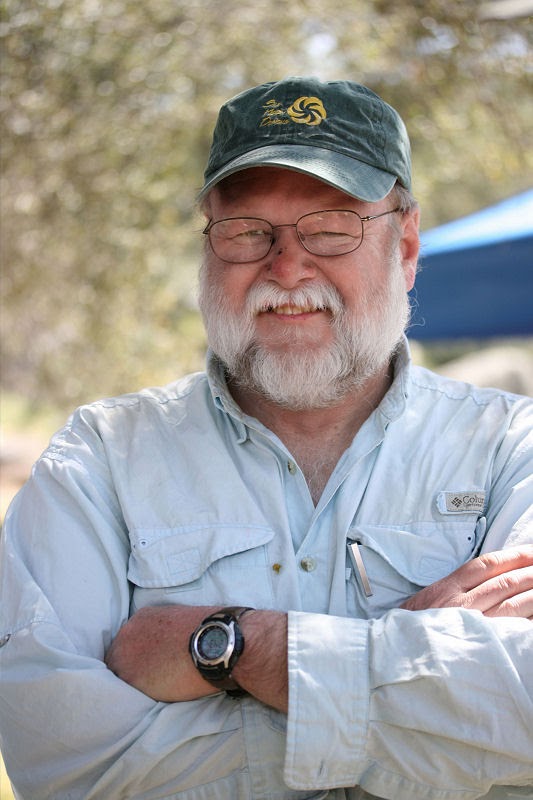So far all interviews were with cottage manufacturers which primarily sell their goods themselves. However, there are a few larger manufacturers out there - GoLite, Rab, Montane, Inov-8, to name just a few - which sell lightweight gear via retailers. Many Brick & Mortar retailers still only carry the normal gear (at least in Finland) so that much of the lightweight gear is purchased online. One of the most popular online retailers in Europe is Ultralight Outdoor Gear in the UK. I managed to get Mark Richardson, the owner of UOG, to answer my question. You know the drill - get your morning coffee and enjoy!
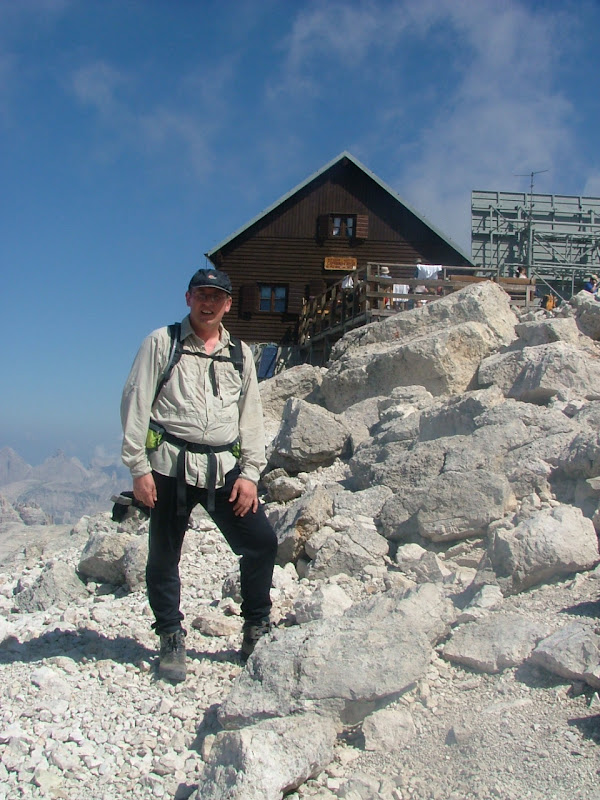
Mark in the Pyrenees.
Mark, please briefly introduce yourself and tell us who you are. Since when are you backpacking, and how did you start? How often are you out backpacking nowadays?
Mark Richardson – now approaching 50! Did my first backpacking in my early teens when I was in the Boys Brigade (youth organisation), but also did many years at static camp for 100+ boys. I have a range of experience, from lightweight camping to Marquees, cotton ‘patrol tents’ to ‘Bell tents’ like those used by the military at the turn of the century! I had a long spell where climbing was what I wanted to do most of all but frankly I’m too heavy to be good at it. I had a leader fall about ten years ago and never recovered my nerve.
In my teens I started a company called Outdoor Specials, I made rucksacks and tents to order, based on a basic design and the customer specified the features on their particular product, then we made it. I think the concept was good but I didn’t have the marketing skill to make it work, if the internet had been around then it may have been a different story.
I usually do a decent trip of a couple of weeks a year but intend increasing this to 3 weeks in 2010 and 4 weeks the year after, when I hope to do the John Muir Trail in the US. Other than this I do 3-4 shorter backpacks a year and lots of days out – mainly in the Lake District which is only a couple of hours from where I live.
When and why did you start to go lightweight/ UL?
I started backpacking again after I’d given up climbing – I don’t miss climbing at all, I still go scrambling but its often part of a longer backpacking route. I wanted to go Ultralight as soon as I got back into the sport, I’ve always been a bit of a gear freak and still drool over new gear whenever I come across it.
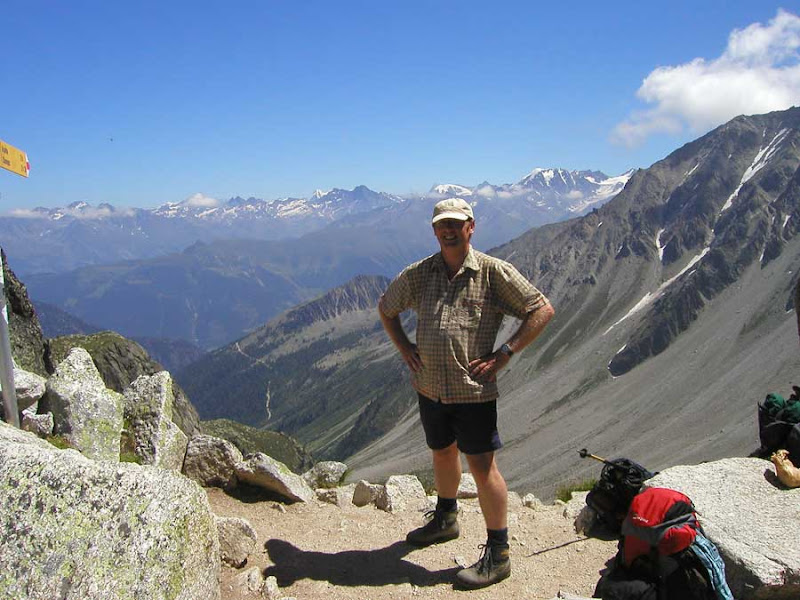
Ultralight Outdoor Gear is one of the best know mailorder shops when it comes to a wide option of ultralight gear here in Europe. Can you tell us a bit how you started the company, and how it developed over the years?
I found that much of the Ultralight gear was only available in the US and it was costing me a small fortune buying it and getting it shipped to the UK, this was about 5 years ago while I was working as a senior manager in the UK NHS. At the time things were comfortable at work and I was looking for something else to interest me, so I started Ultralight Outdoor Gear as a hobby with the aim to address the things I found annoying about shopping for lightweight stuff:
- Ordering from US retailers was very expensive
- There were very few (if any) UK retailers that specialised in lightweight gear, the ones that did had a very limited range, and that left me trawling through standard websites to find the lightest kit, which was often impossible to identify as weights were often not quoted
- Often weights quoted by manufacturers were inaccurate which really wound me up, imagine working out you’d save 100g by switching from your existing waterproof over trousers to new light ones – then finding actually you only save 40g when you got them home and weighed them.
- I’m an XL, so it was always anybody’s guess what an XL weighed as its usually the weight of a medium that’s quoted.
I hope we’re achieving this!
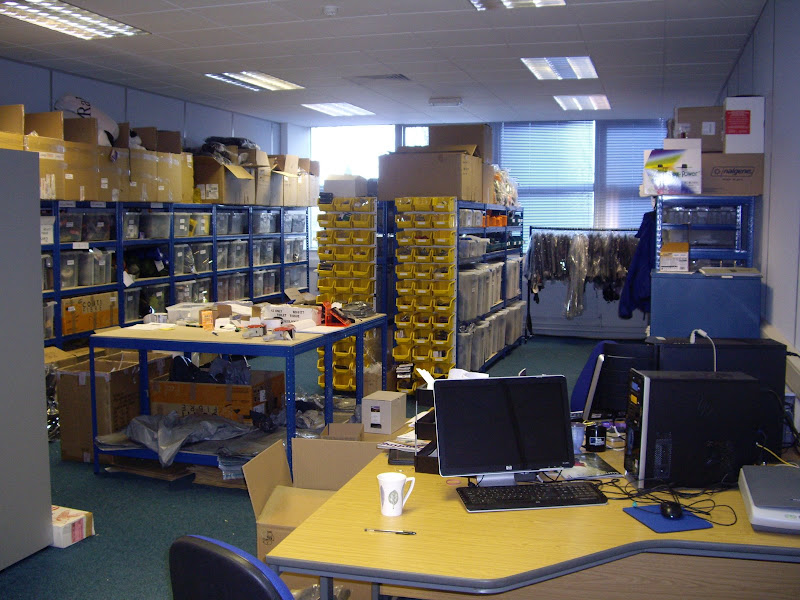
The UOG premises!
Mark, we love to be let in on the work-in-progress stuff! Can you tell us a tiny bit on what kind of new products and brands we might be able to get in the future from Ultralight Outdoor Gear?What is the most sold piece of gear from Ultralight Outdoor Gear? Also, where do your customer come from?
There are lots of ‘best sellers’, the best seller numbers–wise would be the Light My Fire Mini Firesteel or Titanium pegs – 6 pack. Best selling tent would be the GoLite Shangri-La 3, Best selling rucksack would be the OMM Villain, best selling sleeping bag the RAB Quantum 250.
I used to make my own gear when I was a teenager and into my early twenties, I liked designing stuff, making it and using it, I guess that stuck because I’m really keen to produce our own gear. We are well down the road of a single skin lightweight tent design, it will be around 6-700g but will be bug proof and pitch with trekking poles - I hope to have it available by the summer but I can’t be sure yet. I don’t want to confuse any of our customers so we’ll be creating a new brand called “Gram-counter Gear”. As well as tents (we have 4 initial designs) we hope to be able to offer rucksacks in 2011, plus we have a host of accessory ideas.

Gram-counter Gear coming in 2010!
More mainstream: in 2010 we will be offering Western Mountaineering sleeping bags – these are arguably the best in the world and will be our premium brand alongside our other quality brands GoLite and RAB, both of whom have new ranges for 2010. We are also stocking Nemo tents, in particular there are a couple of single skin designs that are very interesting. There are other things in the pipeline – that’s just to whet your appetite! Our customers: We are pleased to be able to sell all over the World, though our main markets are in Europe.
Ultralight gear is only a small slice of the huge outdoor market, and there are many cottage manufacturers which sell direct to their clients. How easy, or difficult, is it to compete versus other online shops and brick and mortar shops?
The internet is highly competitive, but we try not to look too hard at what our competitors are doing – its too easy to worry about what others are doing and end up being a follower, I have a clear view of what I want us to provide and focus more on this.
Once more back to gear: Do customers often come back to you and ask if you can get them a certain piece of gear?
We handle a lot of special orders, we can get anything from our current brands and do so on a regular basis. For UK based suppliers this adds perhaps 3 days to the total time it takes, but we also supply one-offs from companies like Integral Designs, we order from them every couple of months and almost always add things on for some of our customers.
What is your own favorite backpack, sleep system and shelter?
I have to say that the GoLite Shangri-La 1 is my favourite shelter, because it is spacious and light (if you use the groundsheet option). I used the Hut 1 before it, the Shangri-La 1 is much better because it has a bespoke bathtub groundsheet and a higher front end allowing you to sit up much more easily. Its not suitable for all situations though, Scotland for example is full of midges and I would need insect protection, then I’d go for a Hubba or a Big Agnes Fly Creek.
Favourite rucksack is a huge question, for a backpack I like the OMM Jirishanca, at 35 Litres its enough for a week or two when 3 season backpacking, a good compromise between weight, features and comfort. But I also like the GoLite Jam when I want to be a bit lighter. For a daypack I reach for the Vaude Rock Ultralight Comfort 25 Litre pack, a bit big perhaps but I like the way Vaude have packed a lot into a small weight pack, it has a removable stiff back panel and a padded back, the only omission is a decent hipbelt, if it had this I’d use it for backpacking as well. We’ve just stared stocking Exped and their Drypack Pro 15 or 25 Litre packs look fantastic for just a grab and run day in the hills – I’m looking forward to trying them out.
My favourite sleep system is the last one I used – described fully here. The key points are a down sleeping bag, thermal liner, down top that can be used for sleeping in, and insulated airbed. I’ve been very happy with self inflating mattresses over the years but now I’m hooked on the comfort of an airbed, the Thermarest NeoAir is THE top product as far as I am concerned, it has everything, light weight, small pack size, comfort etc. But a close alternative is the Pacific Outdoor Equipment Ether Thermo 6, again very comfortable but not as light or compressible as the NeoAir. I don’t mind sleeping in clothing at all, which is a big advantage when you want to keep your weight to a minimum, and I’d always take down sleeping bags, insulated clothing is best synthetic for wearing on the trail and down for when you’re around camp, the Crux Halo top is magnificent and very comfortable to sleep in.
What was your last longer backpacking trip, and what was your baseweight? Are you trying to get lighter and lighter still, or did you already reach your perfect 3 season setup?
My last trip was in the summer, two weeks in the Pyrenees – the details are on the website. I must admit I compromised here because I wanted to use a Lightwave rucksack and tent, it was a new brand for us last year and I wanted to get some direct experience with it. I could have saved a kilogram by using something lighter – my first choices would have been the Shangri-La 1 and OMM Jirishanca rucksack, but I’ve used both these many times and the opportunity to try something new would have been gone.
I don’t think I’ll ever reach a perfect 3 season setup – its always possible to improve – and that’s half the fun.
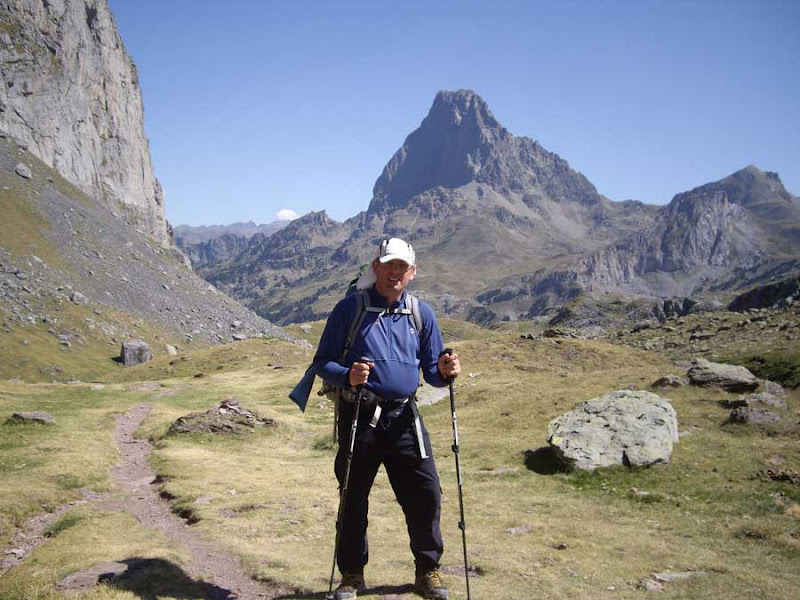
Do you think ultralight backpacking will become more popular and break into the mass market, or will it continue to be something for a small group of people?
Whenever I go into Europe I’m always amazed, everyone still has huge packs and lots of heavy gear, especially young people who you would have thought would be up to date with current thinking! I think I must be living in a lightweight bubble. It just shows that there is huge potential out there, I talk to lots of customers who are just upgrading one piece of kit this year and have decided to make weight a key decision making factor, they have caught on to the idea but can’t afford to replace everything. I think there will be a lot more people going Ultralight in the future but it will be a slow process.
Do you participate in fairs or happenings, like the OMM or TGO Challenge?
I don’t participate in events preferring to make my own way.
Mark, I thank you for taking the time to answer my questions. Is there something you would like to add?
One thing about being on-line is we get very little feedback about the website or what we’re doing – any feedback that the readers would like to give us, both positive and negative, is very welcome.
Mark in the Pyrenees.
Mark, please briefly introduce yourself and tell us who you are. Since when are you backpacking, and how did you start? How often are you out backpacking nowadays?
Mark Richardson – now approaching 50! Did my first backpacking in my early teens when I was in the Boys Brigade (youth organisation), but also did many years at static camp for 100+ boys. I have a range of experience, from lightweight camping to Marquees, cotton ‘patrol tents’ to ‘Bell tents’ like those used by the military at the turn of the century! I had a long spell where climbing was what I wanted to do most of all but frankly I’m too heavy to be good at it. I had a leader fall about ten years ago and never recovered my nerve.
In my teens I started a company called Outdoor Specials, I made rucksacks and tents to order, based on a basic design and the customer specified the features on their particular product, then we made it. I think the concept was good but I didn’t have the marketing skill to make it work, if the internet had been around then it may have been a different story.
I usually do a decent trip of a couple of weeks a year but intend increasing this to 3 weeks in 2010 and 4 weeks the year after, when I hope to do the John Muir Trail in the US. Other than this I do 3-4 shorter backpacks a year and lots of days out – mainly in the Lake District which is only a couple of hours from where I live.
When and why did you start to go lightweight/ UL?
I started backpacking again after I’d given up climbing – I don’t miss climbing at all, I still go scrambling but its often part of a longer backpacking route. I wanted to go Ultralight as soon as I got back into the sport, I’ve always been a bit of a gear freak and still drool over new gear whenever I come across it.

Ultralight Outdoor Gear is one of the best know mailorder shops when it comes to a wide option of ultralight gear here in Europe. Can you tell us a bit how you started the company, and how it developed over the years?
I found that much of the Ultralight gear was only available in the US and it was costing me a small fortune buying it and getting it shipped to the UK, this was about 5 years ago while I was working as a senior manager in the UK NHS. At the time things were comfortable at work and I was looking for something else to interest me, so I started Ultralight Outdoor Gear as a hobby with the aim to address the things I found annoying about shopping for lightweight stuff:
- Ordering from US retailers was very expensive
- There were very few (if any) UK retailers that specialised in lightweight gear, the ones that did had a very limited range, and that left me trawling through standard websites to find the lightest kit, which was often impossible to identify as weights were often not quoted
- Often weights quoted by manufacturers were inaccurate which really wound me up, imagine working out you’d save 100g by switching from your existing waterproof over trousers to new light ones – then finding actually you only save 40g when you got them home and weighed them.
- I’m an XL, so it was always anybody’s guess what an XL weighed as its usually the weight of a medium that’s quoted.
I hope we’re achieving this!
The UOG premises!
Mark, we love to be let in on the work-in-progress stuff! Can you tell us a tiny bit on what kind of new products and brands we might be able to get in the future from Ultralight Outdoor Gear?What is the most sold piece of gear from Ultralight Outdoor Gear? Also, where do your customer come from?
There are lots of ‘best sellers’, the best seller numbers–wise would be the Light My Fire Mini Firesteel or Titanium pegs – 6 pack. Best selling tent would be the GoLite Shangri-La 3, Best selling rucksack would be the OMM Villain, best selling sleeping bag the RAB Quantum 250.
I used to make my own gear when I was a teenager and into my early twenties, I liked designing stuff, making it and using it, I guess that stuck because I’m really keen to produce our own gear. We are well down the road of a single skin lightweight tent design, it will be around 6-700g but will be bug proof and pitch with trekking poles - I hope to have it available by the summer but I can’t be sure yet. I don’t want to confuse any of our customers so we’ll be creating a new brand called “Gram-counter Gear”. As well as tents (we have 4 initial designs) we hope to be able to offer rucksacks in 2011, plus we have a host of accessory ideas.

Gram-counter Gear coming in 2010!
More mainstream: in 2010 we will be offering Western Mountaineering sleeping bags – these are arguably the best in the world and will be our premium brand alongside our other quality brands GoLite and RAB, both of whom have new ranges for 2010. We are also stocking Nemo tents, in particular there are a couple of single skin designs that are very interesting. There are other things in the pipeline – that’s just to whet your appetite! Our customers: We are pleased to be able to sell all over the World, though our main markets are in Europe.
Ultralight gear is only a small slice of the huge outdoor market, and there are many cottage manufacturers which sell direct to their clients. How easy, or difficult, is it to compete versus other online shops and brick and mortar shops?
The internet is highly competitive, but we try not to look too hard at what our competitors are doing – its too easy to worry about what others are doing and end up being a follower, I have a clear view of what I want us to provide and focus more on this.
Once more back to gear: Do customers often come back to you and ask if you can get them a certain piece of gear?
We handle a lot of special orders, we can get anything from our current brands and do so on a regular basis. For UK based suppliers this adds perhaps 3 days to the total time it takes, but we also supply one-offs from companies like Integral Designs, we order from them every couple of months and almost always add things on for some of our customers.
What is your own favorite backpack, sleep system and shelter?
I have to say that the GoLite Shangri-La 1 is my favourite shelter, because it is spacious and light (if you use the groundsheet option). I used the Hut 1 before it, the Shangri-La 1 is much better because it has a bespoke bathtub groundsheet and a higher front end allowing you to sit up much more easily. Its not suitable for all situations though, Scotland for example is full of midges and I would need insect protection, then I’d go for a Hubba or a Big Agnes Fly Creek.
Favourite rucksack is a huge question, for a backpack I like the OMM Jirishanca, at 35 Litres its enough for a week or two when 3 season backpacking, a good compromise between weight, features and comfort. But I also like the GoLite Jam when I want to be a bit lighter. For a daypack I reach for the Vaude Rock Ultralight Comfort 25 Litre pack, a bit big perhaps but I like the way Vaude have packed a lot into a small weight pack, it has a removable stiff back panel and a padded back, the only omission is a decent hipbelt, if it had this I’d use it for backpacking as well. We’ve just stared stocking Exped and their Drypack Pro 15 or 25 Litre packs look fantastic for just a grab and run day in the hills – I’m looking forward to trying them out.
My favourite sleep system is the last one I used – described fully here. The key points are a down sleeping bag, thermal liner, down top that can be used for sleeping in, and insulated airbed. I’ve been very happy with self inflating mattresses over the years but now I’m hooked on the comfort of an airbed, the Thermarest NeoAir is THE top product as far as I am concerned, it has everything, light weight, small pack size, comfort etc. But a close alternative is the Pacific Outdoor Equipment Ether Thermo 6, again very comfortable but not as light or compressible as the NeoAir. I don’t mind sleeping in clothing at all, which is a big advantage when you want to keep your weight to a minimum, and I’d always take down sleeping bags, insulated clothing is best synthetic for wearing on the trail and down for when you’re around camp, the Crux Halo top is magnificent and very comfortable to sleep in.
What was your last longer backpacking trip, and what was your baseweight? Are you trying to get lighter and lighter still, or did you already reach your perfect 3 season setup?
My last trip was in the summer, two weeks in the Pyrenees – the details are on the website. I must admit I compromised here because I wanted to use a Lightwave rucksack and tent, it was a new brand for us last year and I wanted to get some direct experience with it. I could have saved a kilogram by using something lighter – my first choices would have been the Shangri-La 1 and OMM Jirishanca rucksack, but I’ve used both these many times and the opportunity to try something new would have been gone.
I don’t think I’ll ever reach a perfect 3 season setup – its always possible to improve – and that’s half the fun.

Do you think ultralight backpacking will become more popular and break into the mass market, or will it continue to be something for a small group of people?
Whenever I go into Europe I’m always amazed, everyone still has huge packs and lots of heavy gear, especially young people who you would have thought would be up to date with current thinking! I think I must be living in a lightweight bubble. It just shows that there is huge potential out there, I talk to lots of customers who are just upgrading one piece of kit this year and have decided to make weight a key decision making factor, they have caught on to the idea but can’t afford to replace everything. I think there will be a lot more people going Ultralight in the future but it will be a slow process.
Do you participate in fairs or happenings, like the OMM or TGO Challenge?
I don’t participate in events preferring to make my own way.
Mark, I thank you for taking the time to answer my questions. Is there something you would like to add?
One thing about being on-line is we get very little feedback about the website or what we’re doing – any feedback that the readers would like to give us, both positive and negative, is very welcome.
